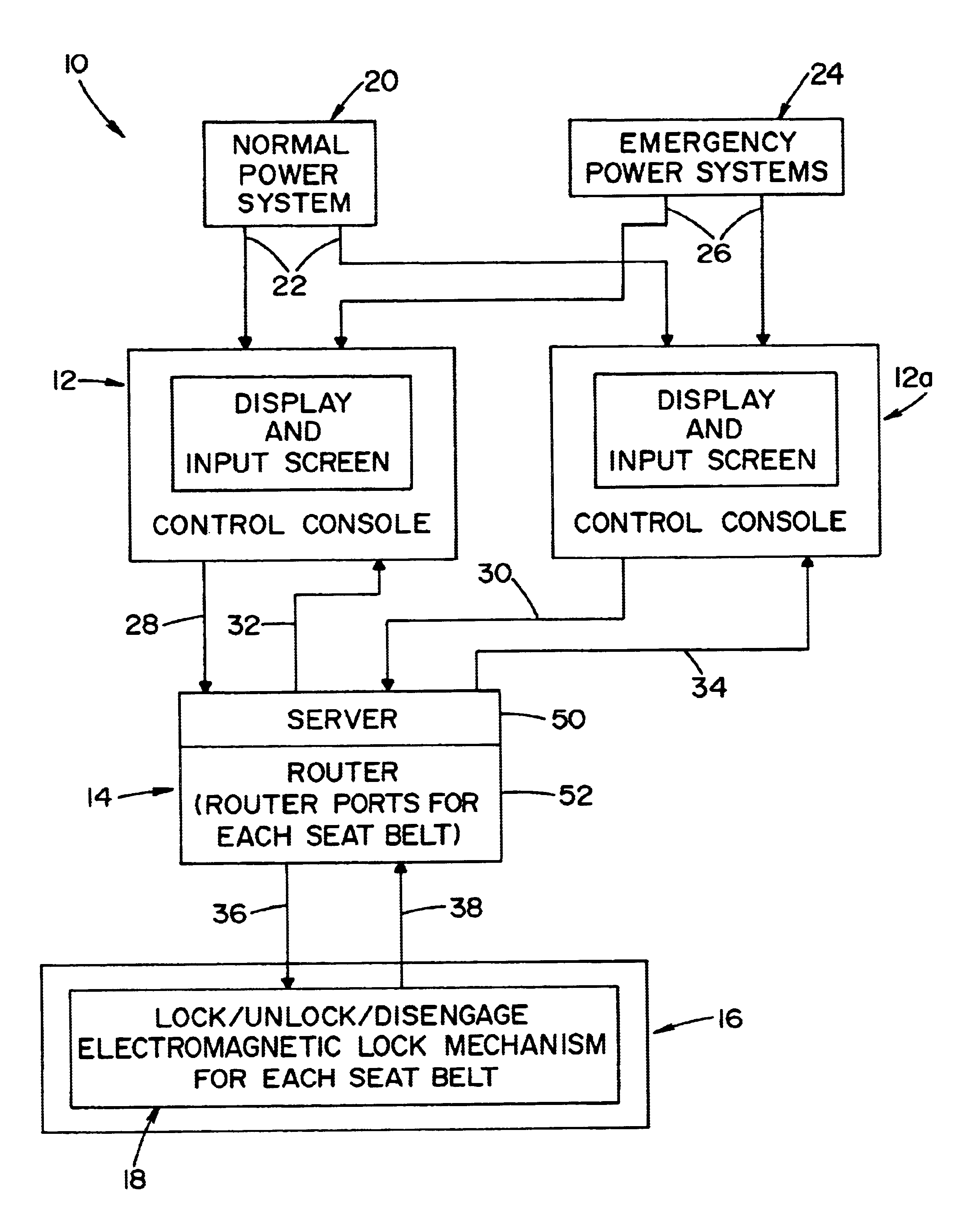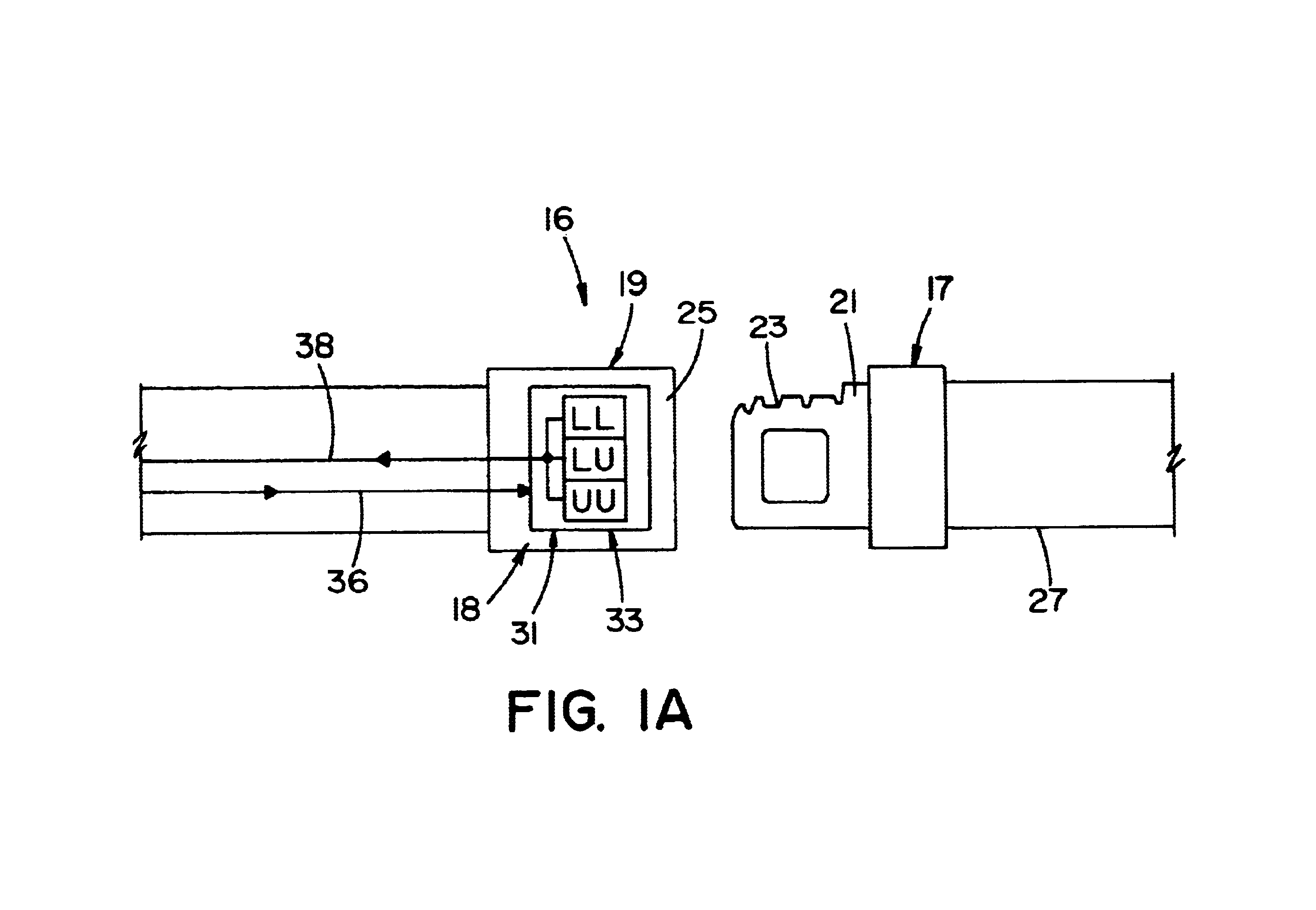Control system for aircraft seat belt arrangement
a control system and seat belt technology, applied in belt control systems, program control, securing communication, etc., can solve problems such as potential hijackers, flight attendants and/or pilots not being able to be alerted, and current seat belt systems used by airlines that do not provide any security against, so as to optimize the safety of the airplane and the safety of passengers.
- Summary
- Abstract
- Description
- Claims
- Application Information
AI Technical Summary
Benefits of technology
Problems solved by technology
Method used
Image
Examples
Embodiment Construction
[0021]According to the present invention as embodied and described herein, a method and system for detecting the condition of and controlling the locking and unlocking of aircraft seat belt mechanisms is provided. While a system and method for controlling aircraft seat belt arrangements is described, it will be appreciated that the technology described herein may also be applied to the control of seat belts used in conjunction with other modes of travel, i.e. trains, buses, etc.
[0022]FIG. 1 shows a control system 10 having at least one and preferably at least two identical control consoles 12 and 12a, a common processor 14, and a seat belt or seat restraint 16 including an electromagnetic lock mechanism 18 for locking and unlocking seat belt 16 as set forth more fully hereinafter. It will be appreciated, of course, that seat belt unit 16 is one of a plurality of such units, each of which is electronically connected to the consoles through processor 14 as described herein with regard...
PUM
 Login to View More
Login to View More Abstract
Description
Claims
Application Information
 Login to View More
Login to View More - R&D
- Intellectual Property
- Life Sciences
- Materials
- Tech Scout
- Unparalleled Data Quality
- Higher Quality Content
- 60% Fewer Hallucinations
Browse by: Latest US Patents, China's latest patents, Technical Efficacy Thesaurus, Application Domain, Technology Topic, Popular Technical Reports.
© 2025 PatSnap. All rights reserved.Legal|Privacy policy|Modern Slavery Act Transparency Statement|Sitemap|About US| Contact US: help@patsnap.com



